Amazing Images Reveal How the Exclusion Zone Around Fukushima Has Been Abandoned to Become an Overgrown Wilderness
A stunning new photo project offers unprecedented insight into the wild and desolate exclusion zone surrounding the Fukushima nuclear power plant – where tonnes of contaminated soil lie untouched and overgrown forest is engulfing hundreds of abandoned vehicles and homes.
The 12.5-mile exclusion zone around the nuclear plant now resembles post-apocalyptic scenes from The Walking Dead after it was instantly abandoned following the 2011 nuclear disaster.
People deserted the area after warnings of dangerous levels of radioactivity, leaving cars, classrooms and libraries to be swallowed by the overgrown wilderness in stark scenes reminiscent of those seen in the show, in which entire towns have been left in stasis after zombies overran the earth.
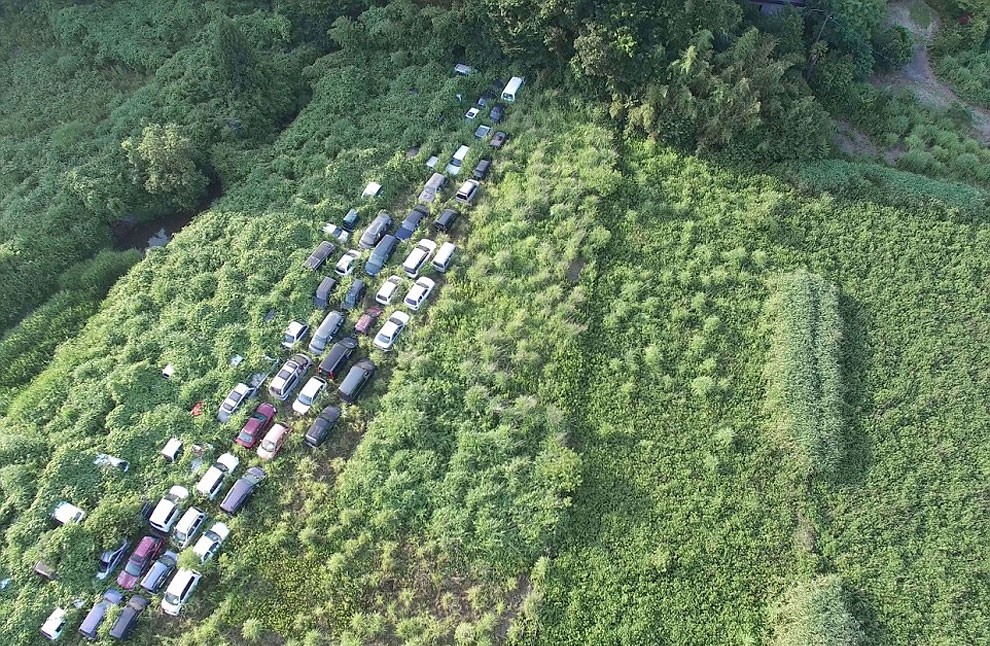
Dozens of vehicles lie abandoned and covered in overgrown bushes along what was once a stretch of road near the power plant. ( © Arkadiusz Podniesinski / REX / Shutterstock)
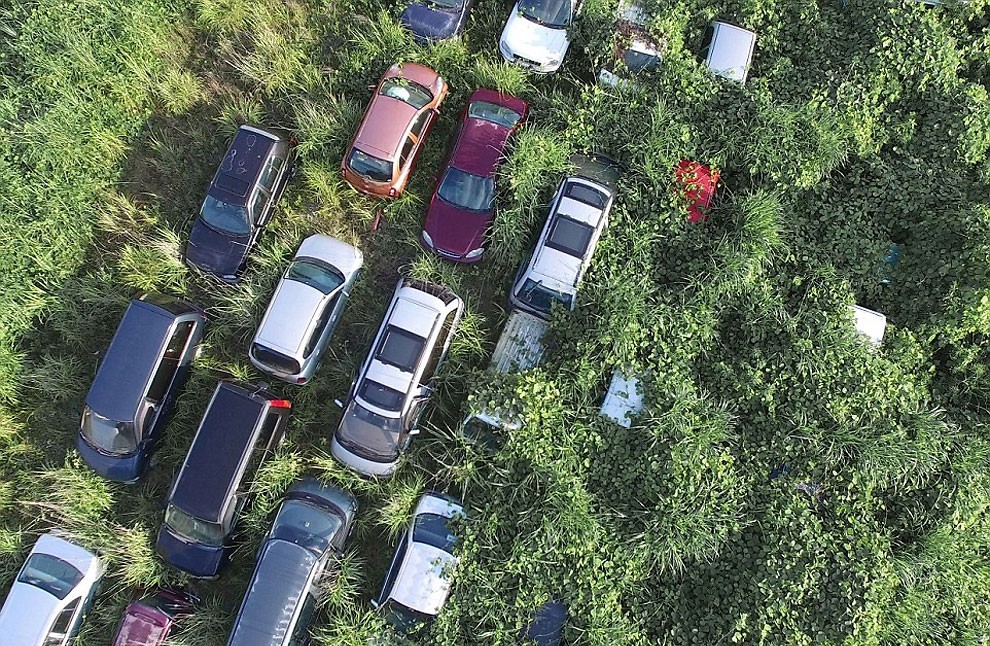
Many vehicles now lie almost completely covered by the forest, which has been left to grow wild since the Fukushima Nuclear Disaster. ( © Arkadiusz Podniesinski / REX / Shutterstock)

A motorbike sits chained to a pole where it was left locked in the hours before the tsunami struck the region, triggering a reactor meltdown. ( © Arkadiusz Podniesinski / REX / Shutterstock)
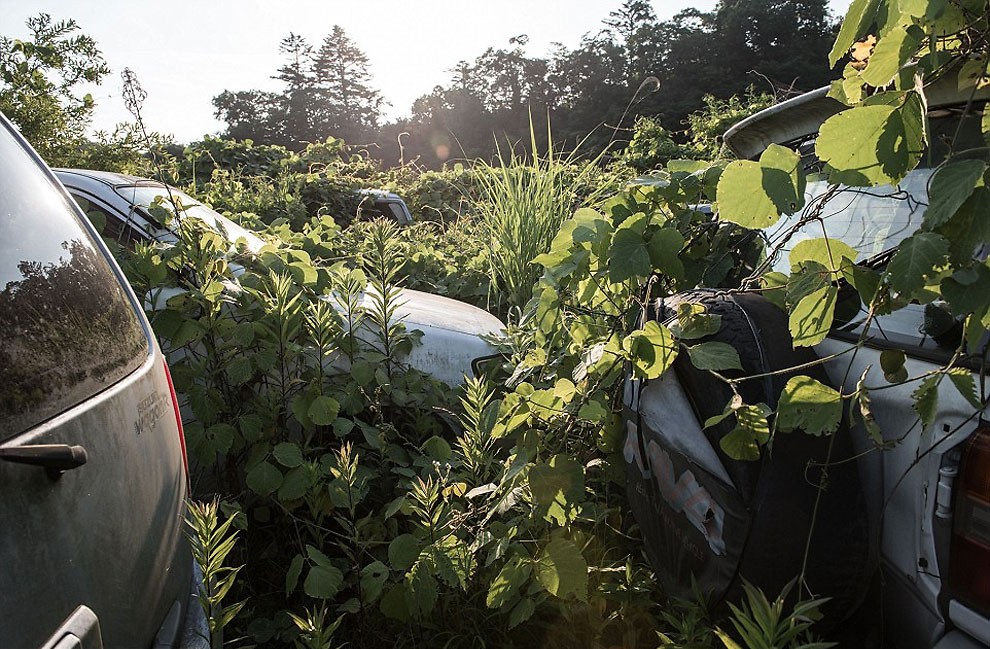
After four years without maintenance, bushes and shrubs have slowly swallowed the cars left abandoned in the area. ( © Arkadiusz Podniesinski / REX / Shutterstock)
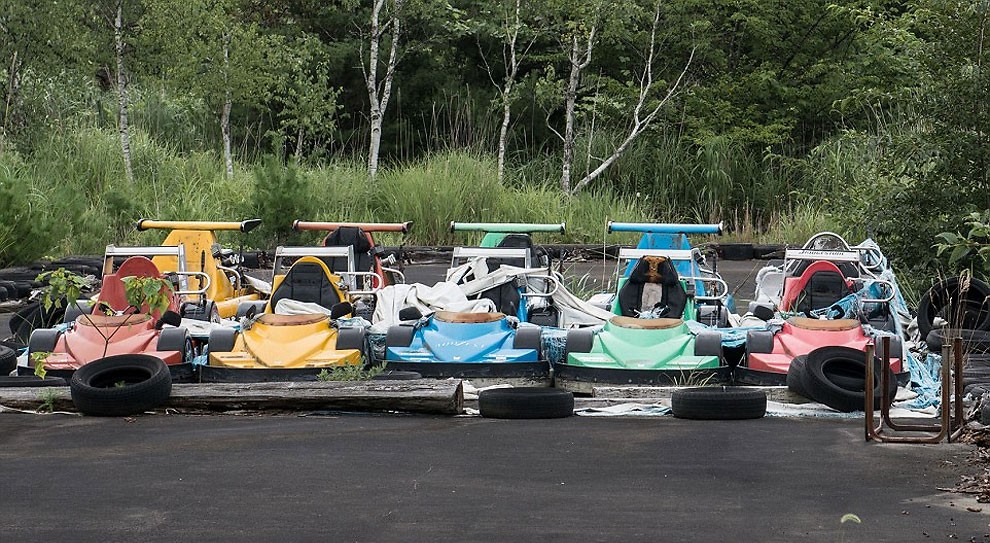
Go karts remain lined up and ready to race in an entertainment park located within the 12.5mile exclusion zone. ( © Arkadiusz Podniesinski / REX / Shutterstock)
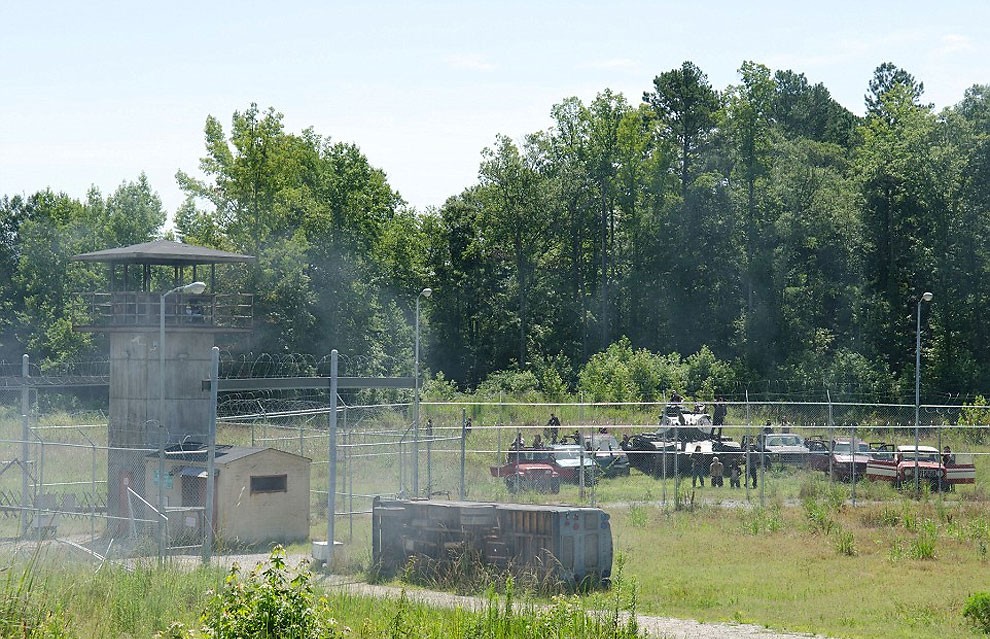
The Walking Dead shows similar scenes of what look like remote outposts in areas of otherwise undisturbed woodland. ( © AMC / Everett / REX / Shutterstock)
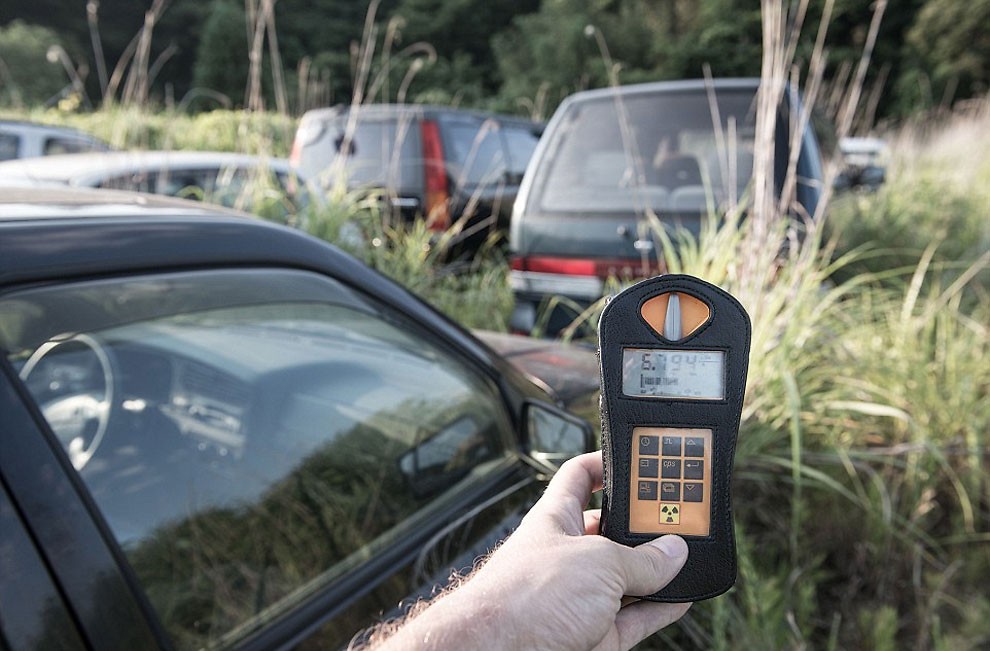
Photographer Arkandiusz Podniesinski shows a radiation reading of 6.7 uSv/h inside the dangerous fallout zone. ( © Arkadiusz Podniesinski / REX / Shutterstock)
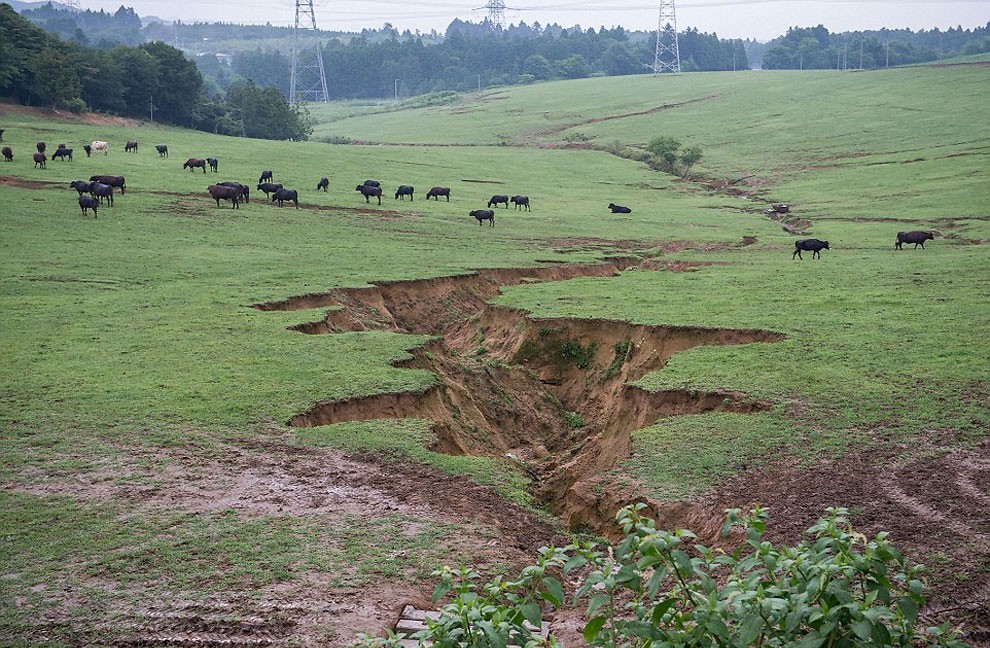
Pictured are cracks in the ground caused by the earthquake, which led to the tsunami that triggered the disaster. The nearby cattle are owned by Masami Yoshizawa, a landowner who returned to his farm after the disaster. ( © Arkadiusz Podniesinski / REX / Shutterstock)
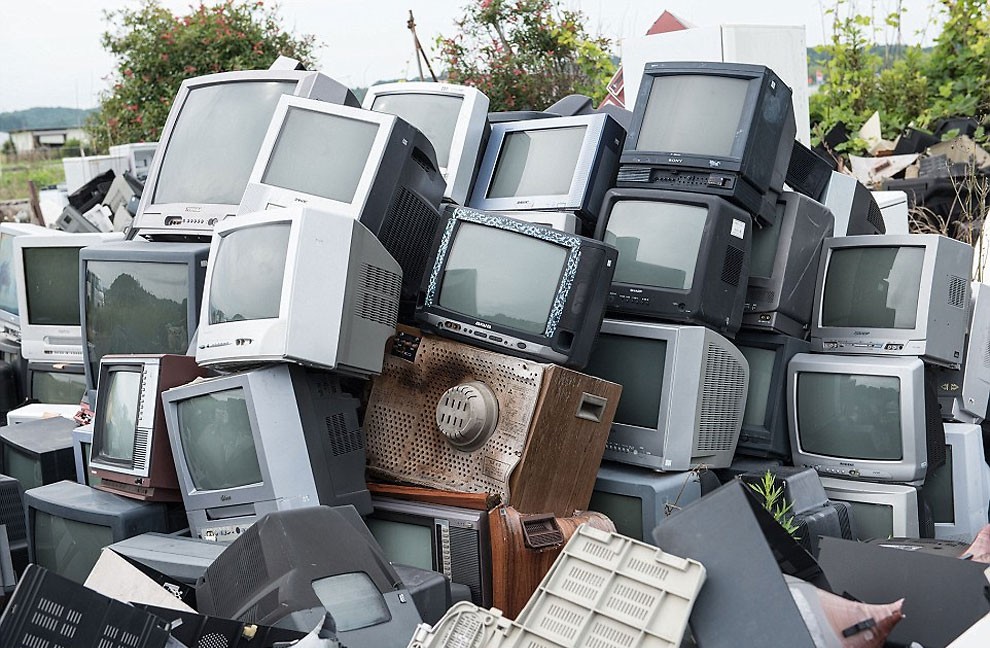
A stack of contaminated televisions lie in a heap among the overgrown forests and abandoned buildings near Fukushima. ( © Arkadiusz Podniesinski / REX / Shutterstock)
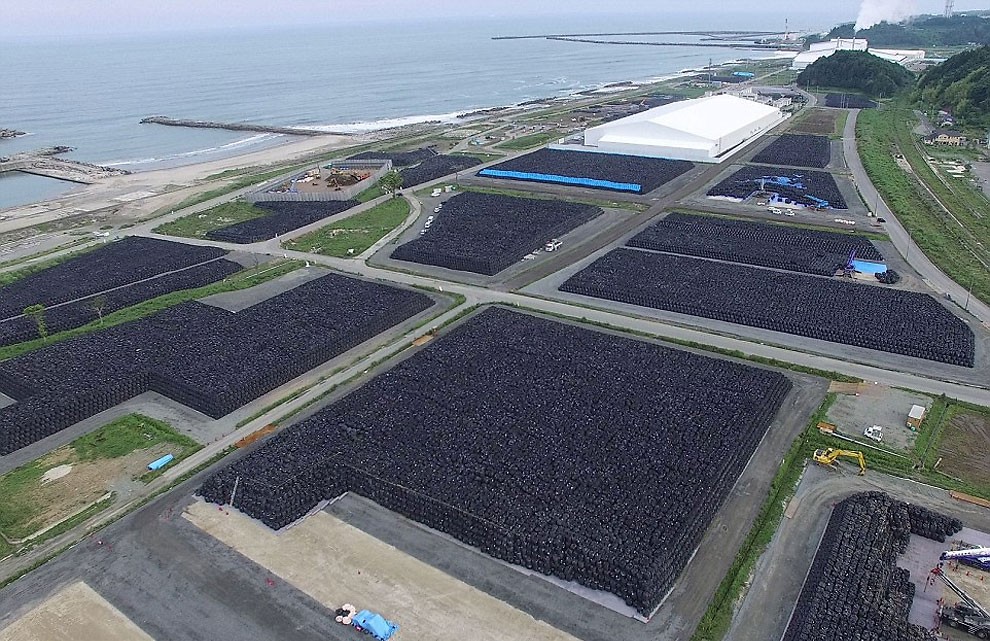
An aerial photograph taken by a drone shows the vast dump sites that contain tens of thousands of sacks of contaminated soil. ( © Arkadiusz Podniesinski / REX / Shutterstock)
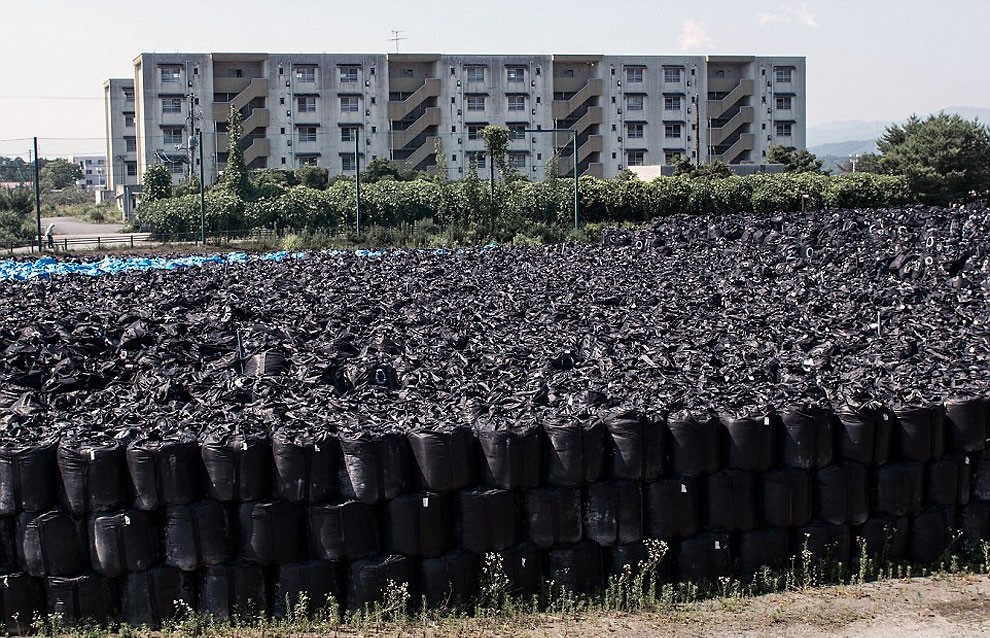
To save space, the radioactive bags of soil are stacked on top of one another. Some 120,000 residents have not yet been allowed back into their homes. ( © Arkadiusz Podniesinski / REX / Shutterstock)
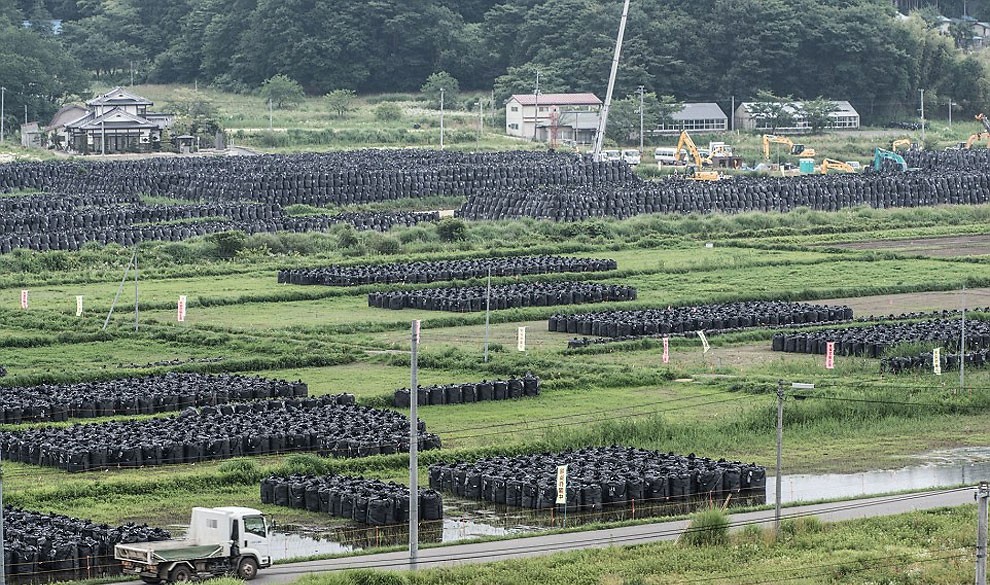
Skeptical landowners who lived within the exclusion zone have been told all the contaminated bags of soil (pictured) will be disposed of. ( © Arkadiusz Podniesinski / REX / Shutterstock)
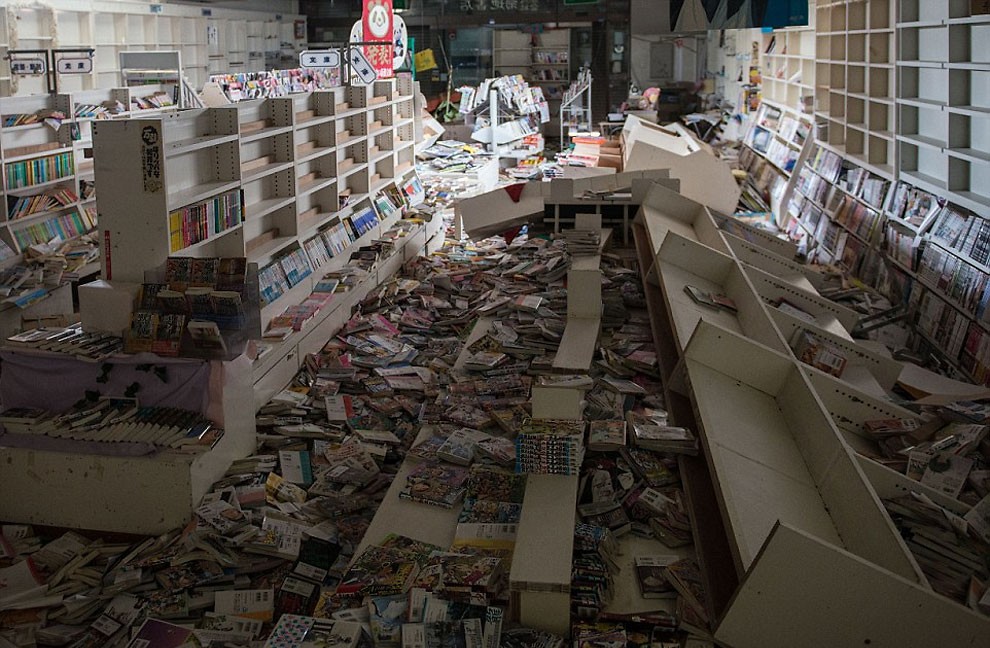
Four years on, a book shop thrown into a state of disarray by the earthquake lies untouched in a chaotic state. ( © Arkadiusz Podniesinski / REX / Shutterstock)
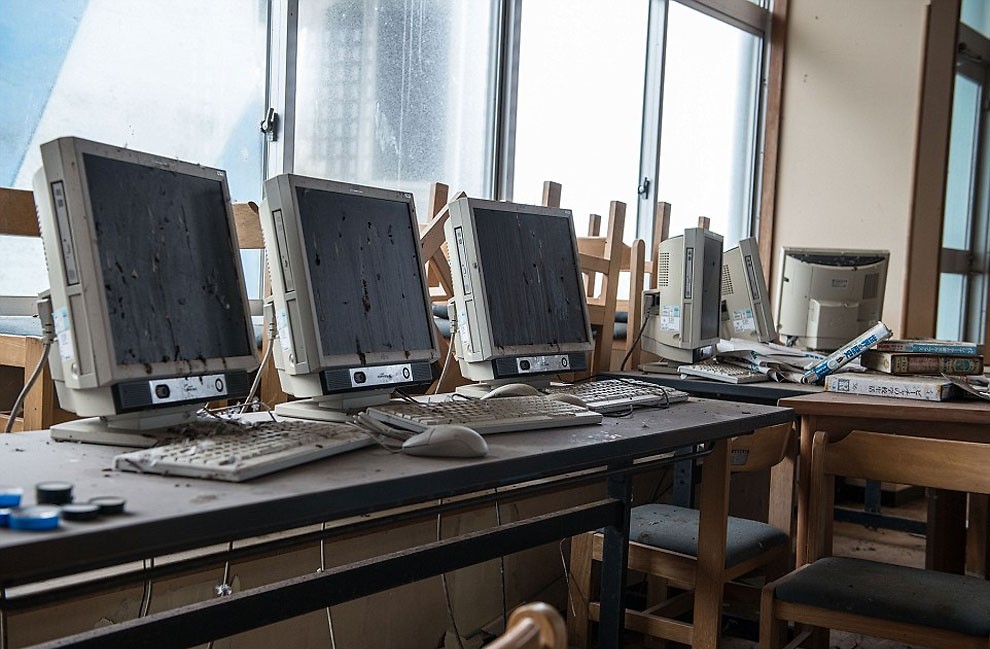
Computer screens left covered in waste and animal droppings lie untouched inside a classroom in one of the villages near Fukushima. ( © Arkadiusz Podniesinski / REX / Shutterstock)
Mr Podniesinski said: “When I entered the exclusion zone, the first thing I noticed was the huge scale of decontamination work. This was a way of drawing my own conclusions without being influenced by any media sensation, government propaganda, or nuclear lobbyists who are trying to play down the effects of the disaster.”
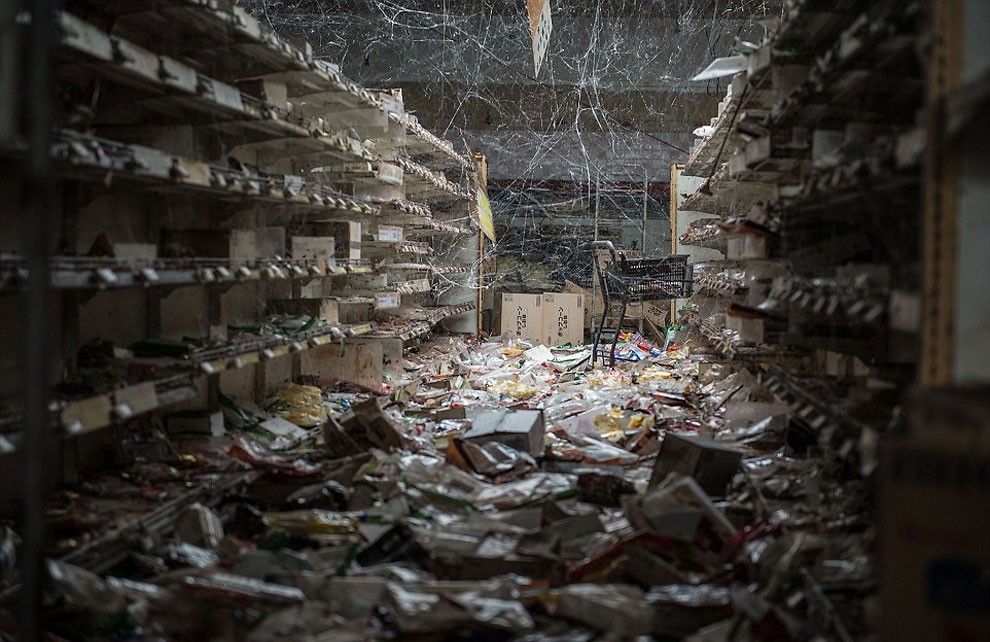
Cobwebs now hang between the shelves of this supermarket, where products still lie scattered across the floors. ( © Arkadiusz Podniesinski / REX / Shutterstock)

Dozens of abandoned bikes lie chained to bike rails. They are among the network of towns and villages near the power plant that were populated prior to the disaster. ( © Arkadiusz Podniesinski / REX / Shutterstock)
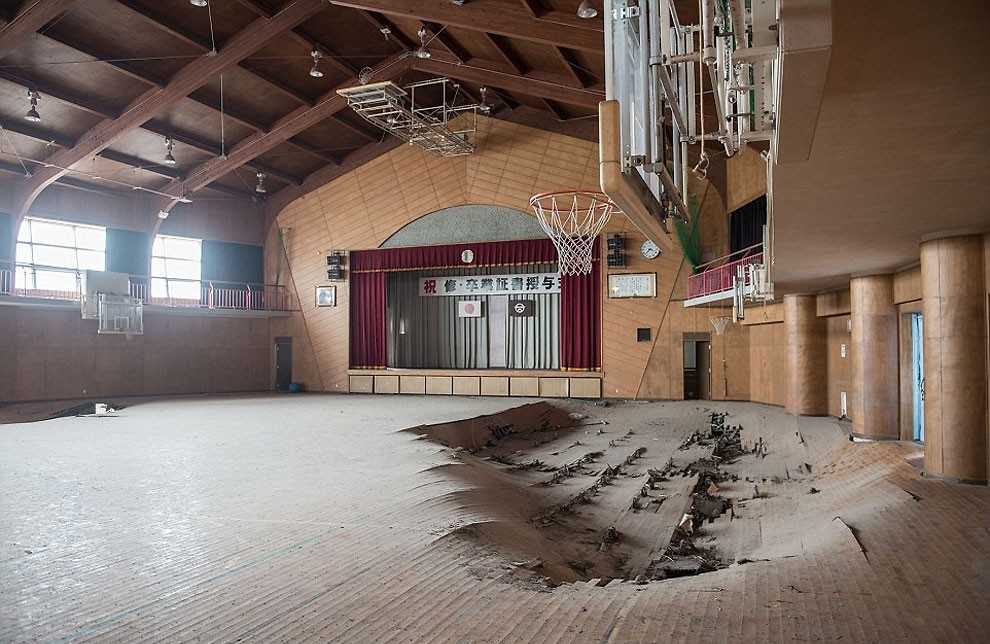
The disaster was triggered by an earthquake which generated the tsunami. Pictured is a school gymnasium damaged by the shaking. ( © Arkadiusz Podniesinski / REX / Shutterstock)
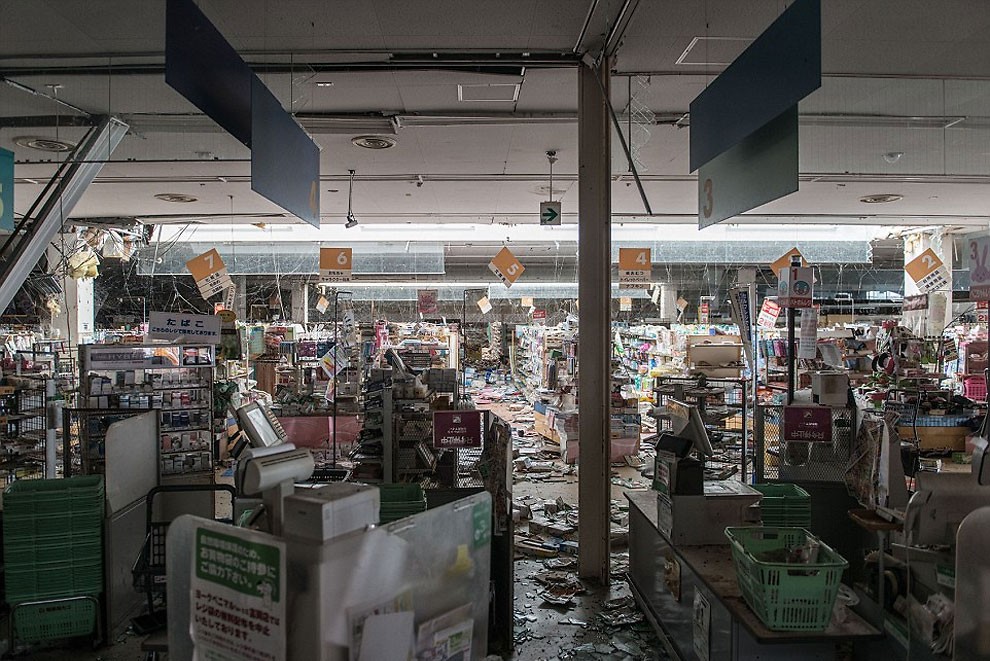
Supermarket checkouts and products lie strewn over the floor in this eerie image taken of a shop located near the Fukushima power plant. ( © Arkadiusz Podniesinski / REX / Shutterstock)

A dining table and seats, complete with bowls and portable cookers ready for food to be prepared, lie untouched. ( © Arkadiusz Podniesinski / REX / Shutterstock)
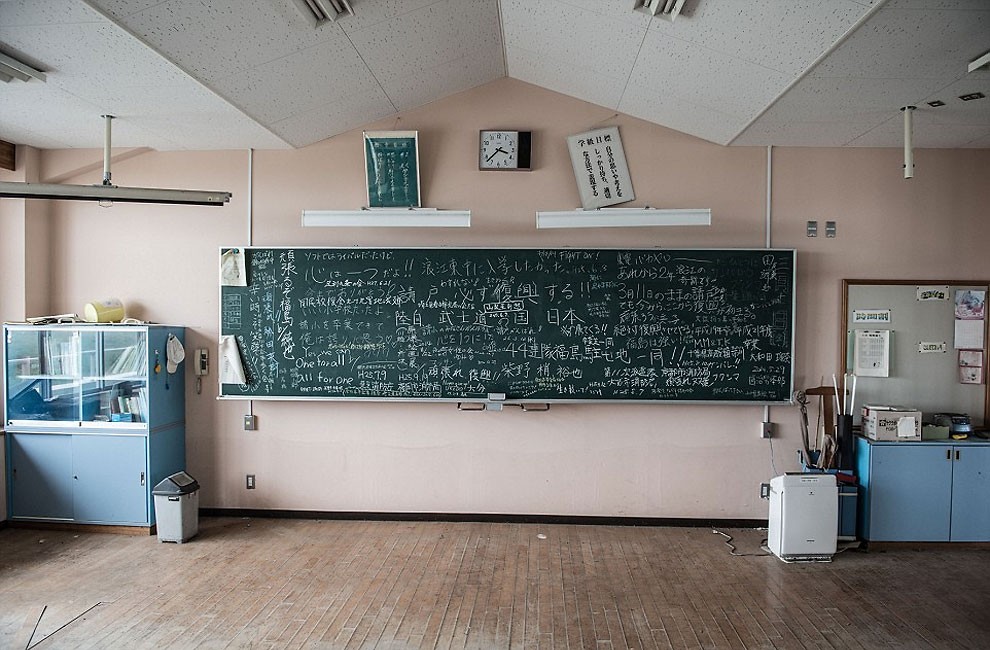
A classroom blackboard still displays the scribbles of what children were learning the moment the earthquake struck. ( © Arkadiusz Podniesinski / REX / Shutterstock)

Workers donning protective clothing scrub a house in the hope it will allow residents to move back into their homes. ( © Arkadiusz Podniesinski / REX / Shutterstock)
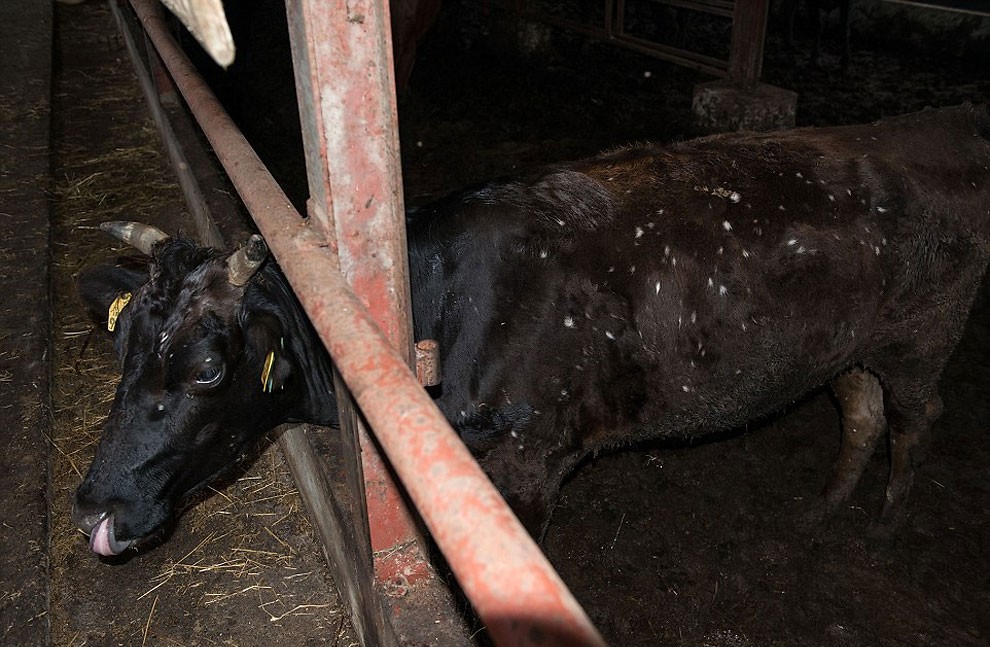
Not long after the accident, cows started to get mysterious white spots on their skin. A farm owner suspects that this is due to the cows eating contaminated grass. ( © Arkadiusz Podniesinski / REX / Shutterstock)

A trashed piano and musical instruments lie on the floor after residents were evacuated following the Fukushima nuclear disaster. ( © Arkadiusz Podniesinski / REX / Shutterstock)
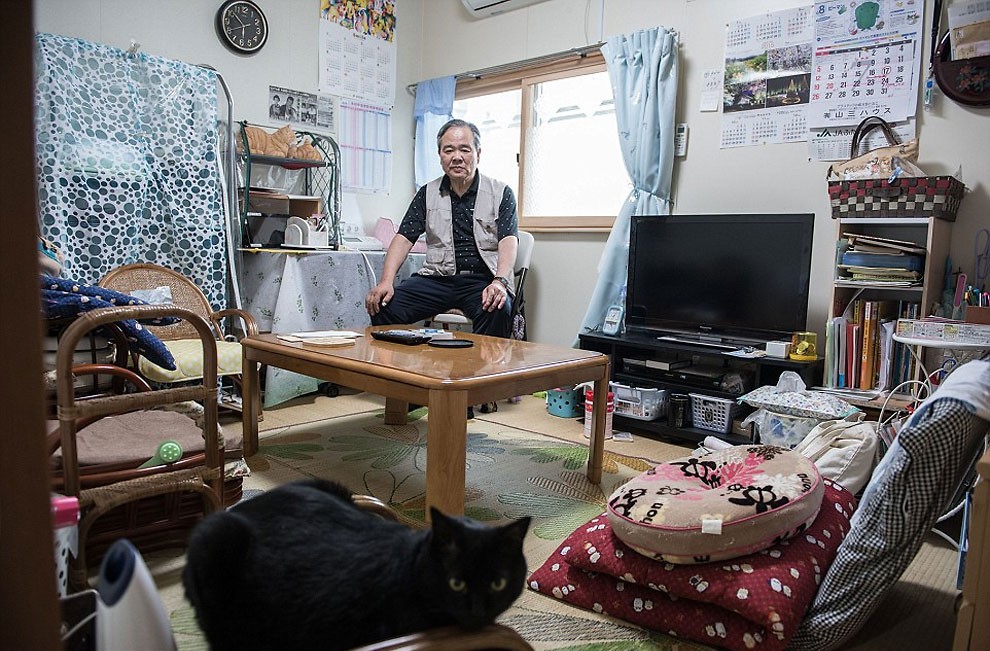
Kouichi Nozawa (pictured) lives with his wife Youko in a room in temporary housing near Fukushima, after being evacuated out of the exclusion zone. ( © Arkadiusz Podniesinski / REX / Shutterstock)
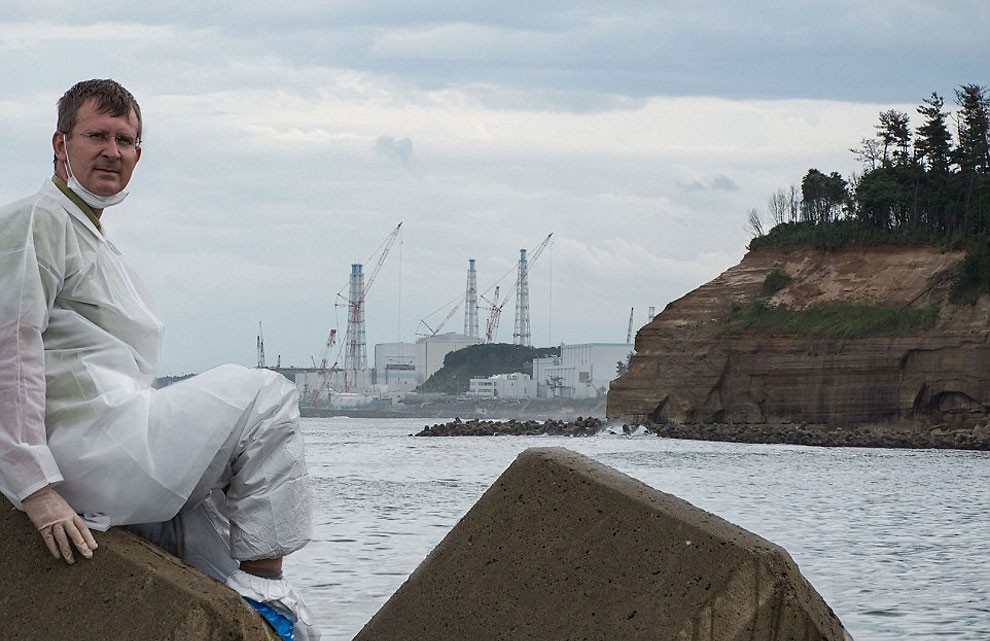
Photographer Arkadiusz Podniesinski, pictured wearing protective clothing, said it felt as though time had stood still in the area. ( © Arkadiusz Podniesinski / REX / Shutterstock)
Via The Daily Mail